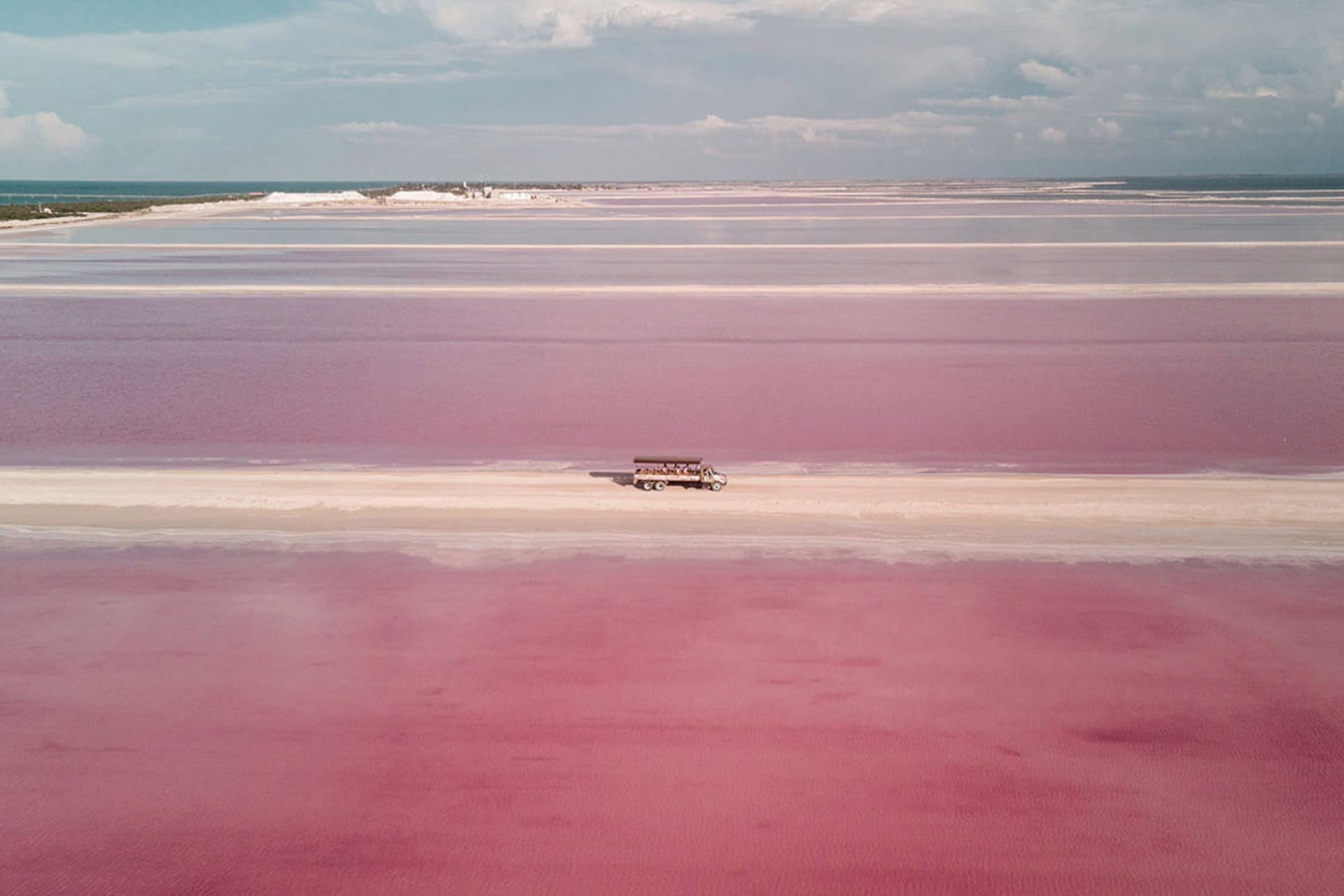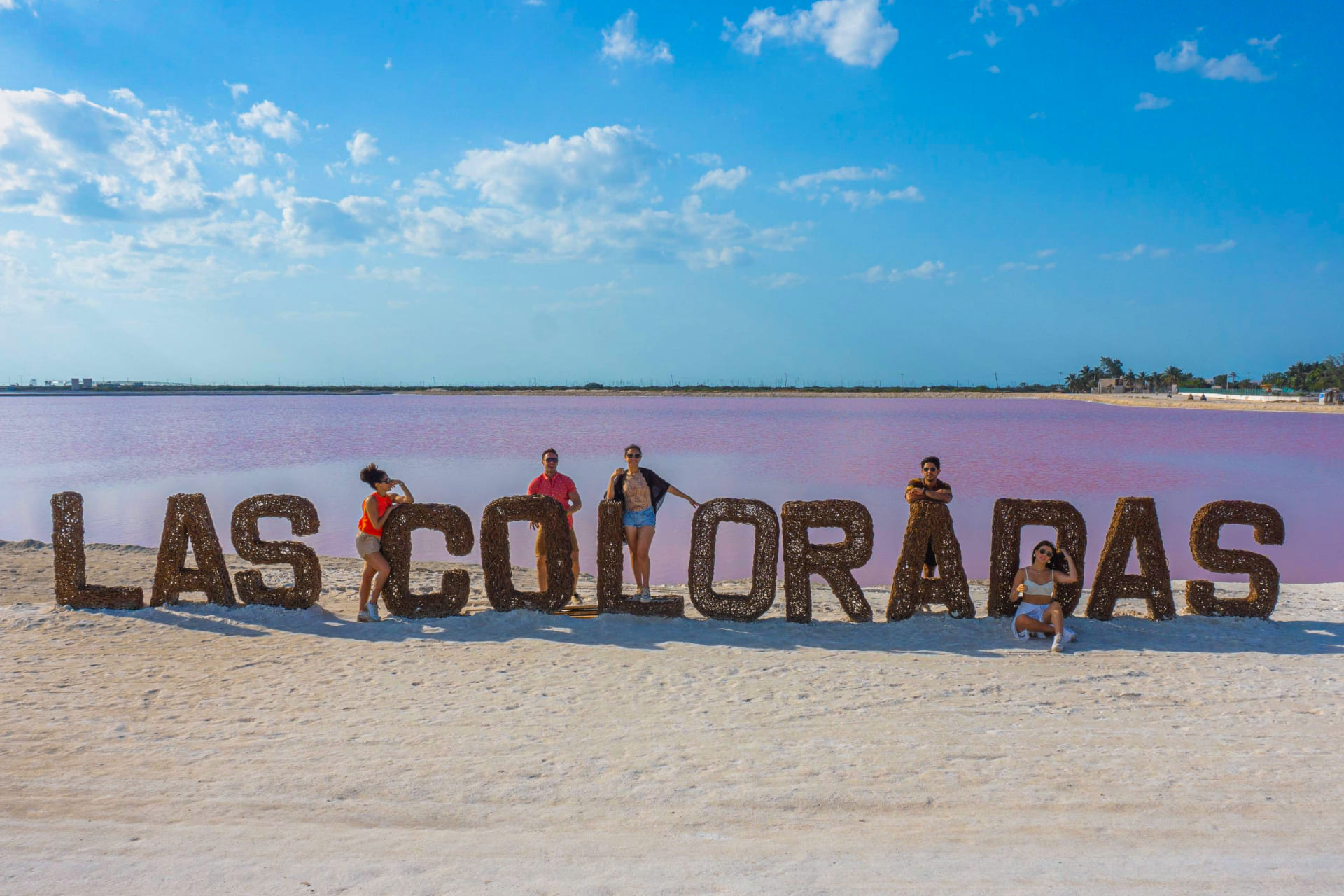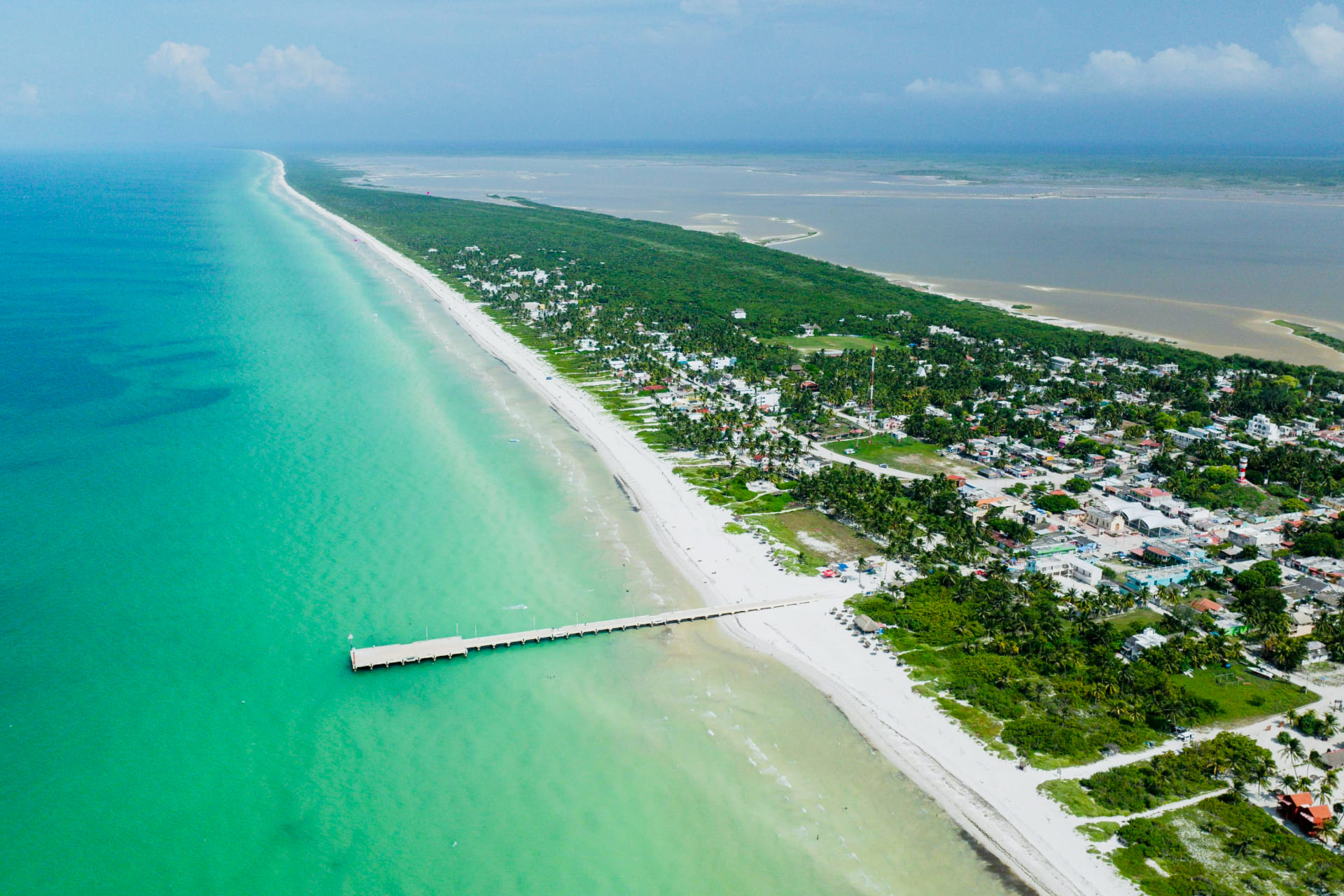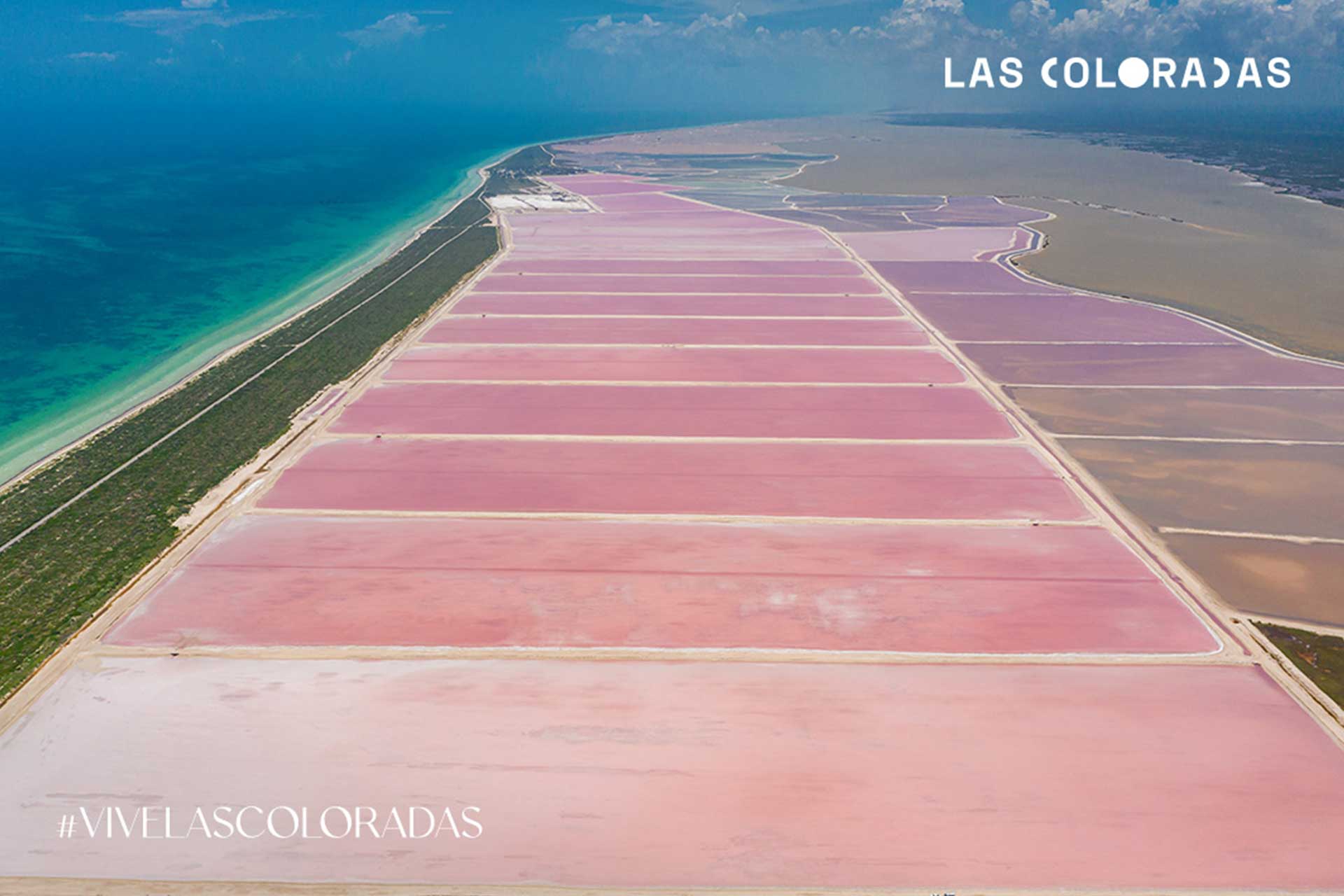
The Most Beautiful Salt Flats in the World
An impossible pink landscape, salt mountains, and birds that seem like guardians of another world... What secrets lie within the world’s most beautiful salt flats? Discover it in Las Coloradas, Yucatán.
In a magical corner of northern Yucatán Peninsula—where pink waters and nature come together—a centuries-old process continues to give life and livelihood to generations: the salt harvest in Las Coloradas.
Why Is the Water Pink? The vibrant pink color of the lagoons is due to a high concentration of salt and the presence of microorganisms such as halobacteria and a tiny crustacean called Artemia salina. These organisms tint the water pink, especially during the dry season, when evaporation levels are higher.
Why Is the Water Pink? The vibrant pink color of the lagoons is due to a high concentration of salt and the presence of microorganisms such as halobacteria and a tiny crustacean called Artemia salina. These organisms tint the water pink, especially during the dry season, when evaporation levels are higher.
This natural phenomenon isn’t just beautiful—it’s a sign that the salt harvest is at its peak.
A Millennia-Old Process with Mayan Roots Salt is more than a seasoning. In ancient times, it was as valuable as gold. The Maya civilization harvested salt in this region over a thousand years ago, using it not only to preserve food but also as a form of currency in their vast trade networks.
Today, salt production in Las Coloradas blends modern techniques with traditional knowledge, offering a perfect example of how history and nature can work in harmony to create something extraordinary.
How Is Salt Harvested? The process begins by pumping seawater into a series of shallow lagoons called "salinas". Over several weeks, the sun and wind do their work: the water slowly evaporates, and salt crystals begin to form on the bottom.
When most of the water has evaporated and the salt has hardened, it is collected—either by hand or using machinery. This phase is known as the salt harvest. During this time, the landscape transforms into fields of white salt mounds, contrasting beautifully with the pink waters and blue skies.
A Natural and Cultural Spectacle The salt harvest season is a true event. If you’re lucky enough to visit Las Coloradas between April and August, you’ll witness the process firsthand. The giant salt piles, the shimmering reflections of the sun, and the workers with their traditional tools create a scene worthy of admiration and respect.
Some salt companies even offer guided tours, where you can learn about the process and take photos (with certain restrictions to protect the environment).
A Job of Respect and Endurance Working in the salt fields is no easy task: the sun is intense, the glare from the water and salt crystals can be blinding, and the workdays are long. Yet those who carry out this labor—often following a tradition passed down through generations—do so with pride. They are the keepers of knowledge handed down from parent to child.
Tips for Visiting Las Coloradas
A Journey to the Heart of Salt Visiting Las Coloradas is much more than seeing pink lagoons. It’s a chance to discover one of Mexico’s most fascinating natural and cultural processes: the salt harvest. A living legacy that reminds us how humanity can work in harmony with nature, honoring the cycles of water, sun, and earth.
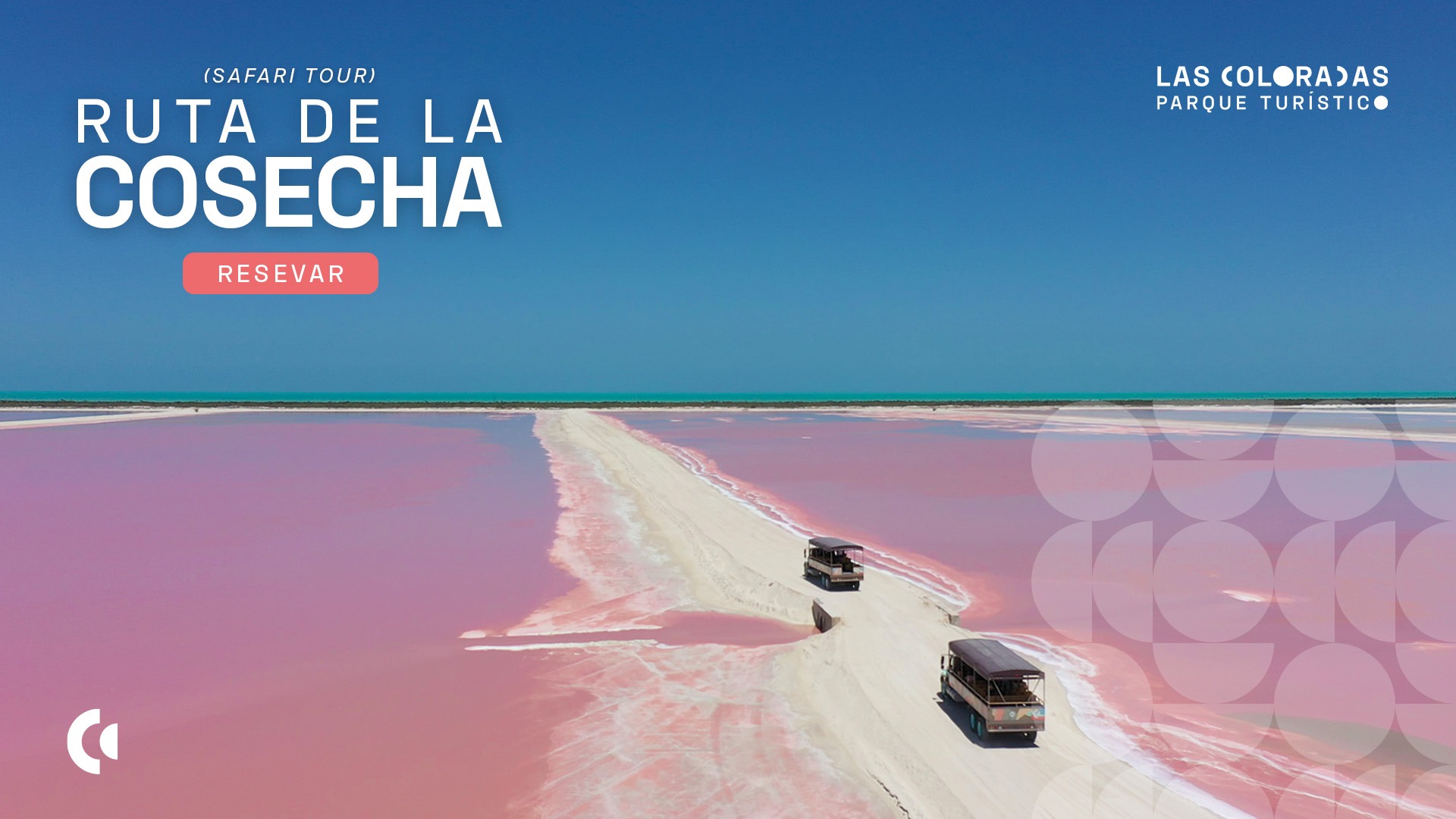

An impossible pink landscape, salt mountains, and birds that seem like guardians of another world... What secrets lie within the world’s most beautiful salt flats? Discover it in Las Coloradas, Yucatán.
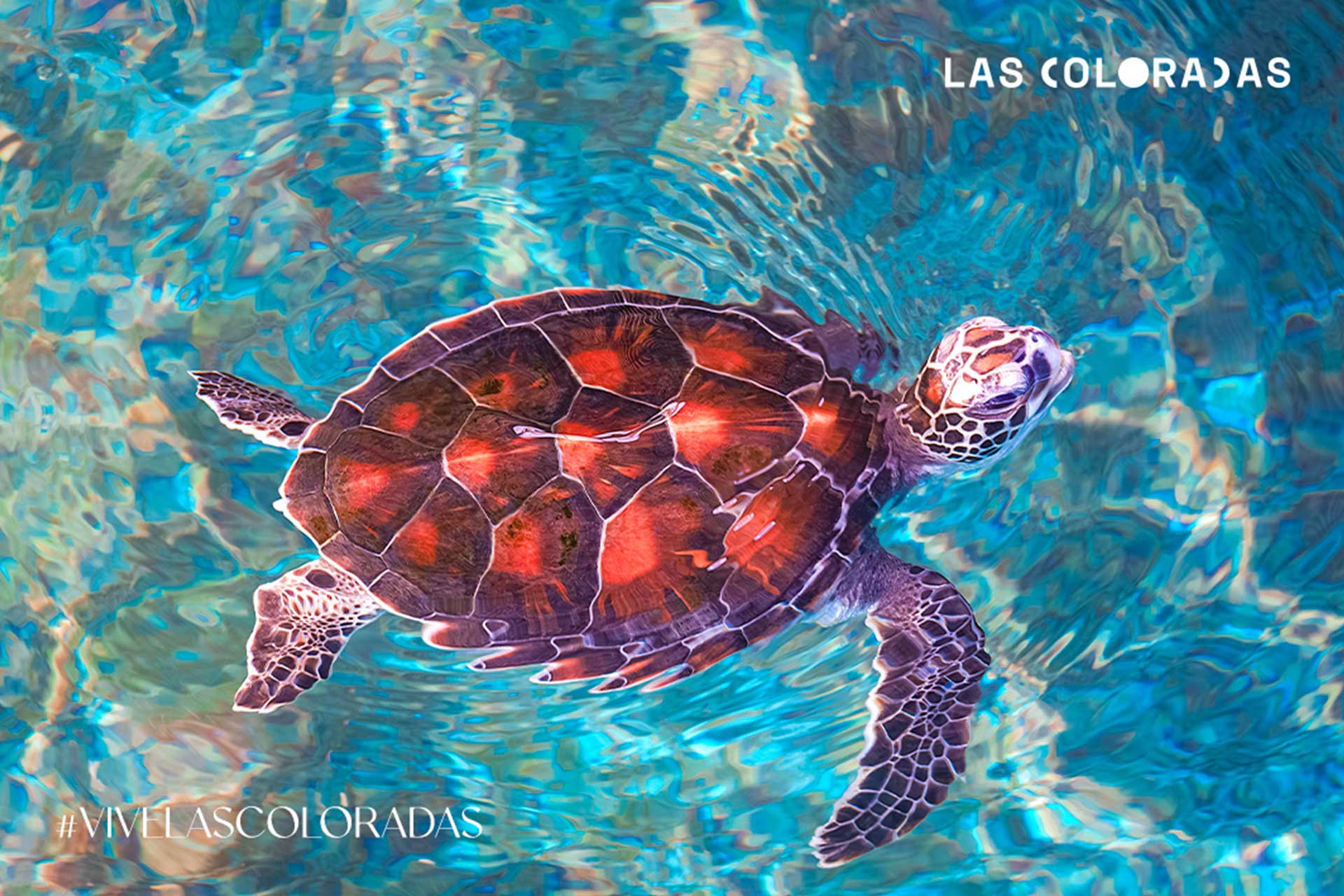
Majestic, silent, and ancient, sea turtles are among the oldest and most vulnerable treasures of our oceans. They have roamed the seas for over 100 million years, surviving mass extinctions and climate shifts… but today, their greatest threat is us.
